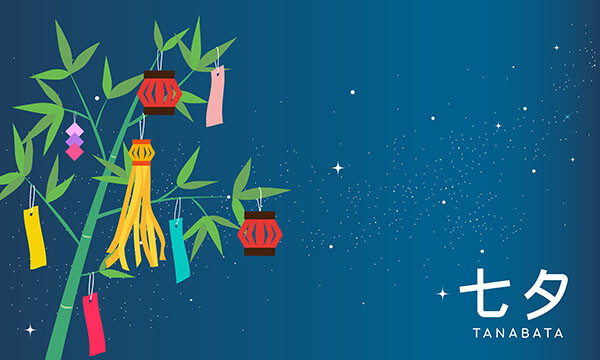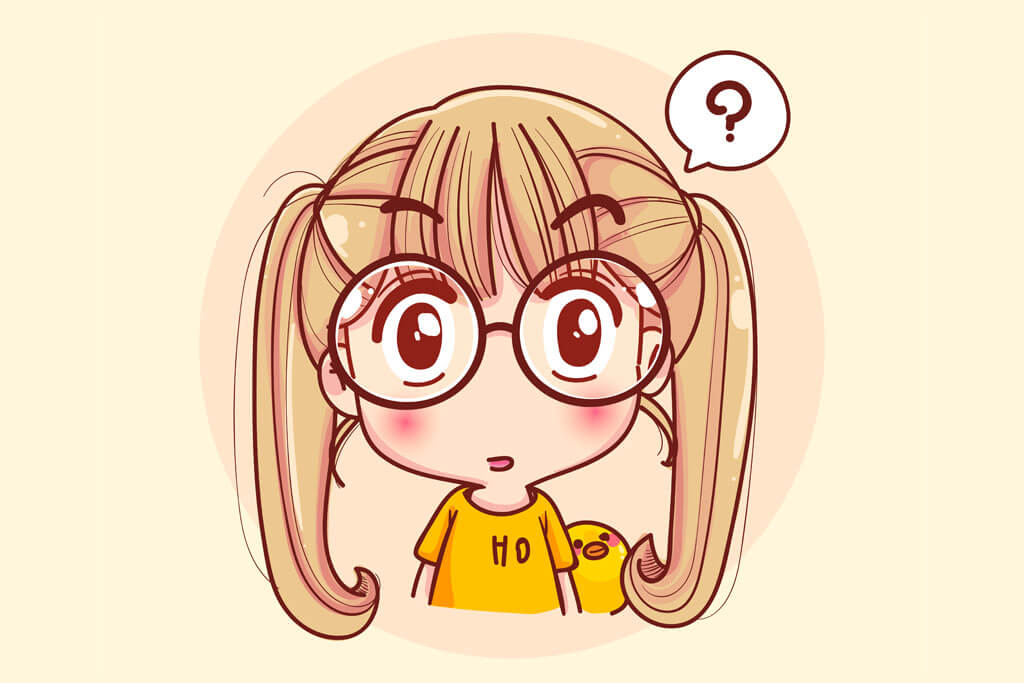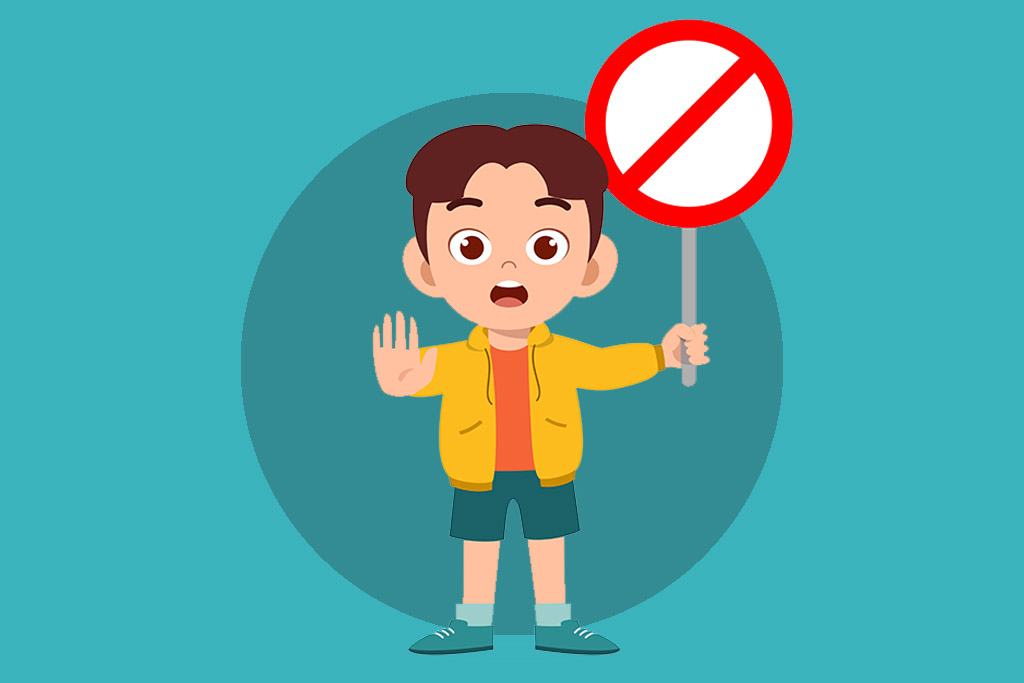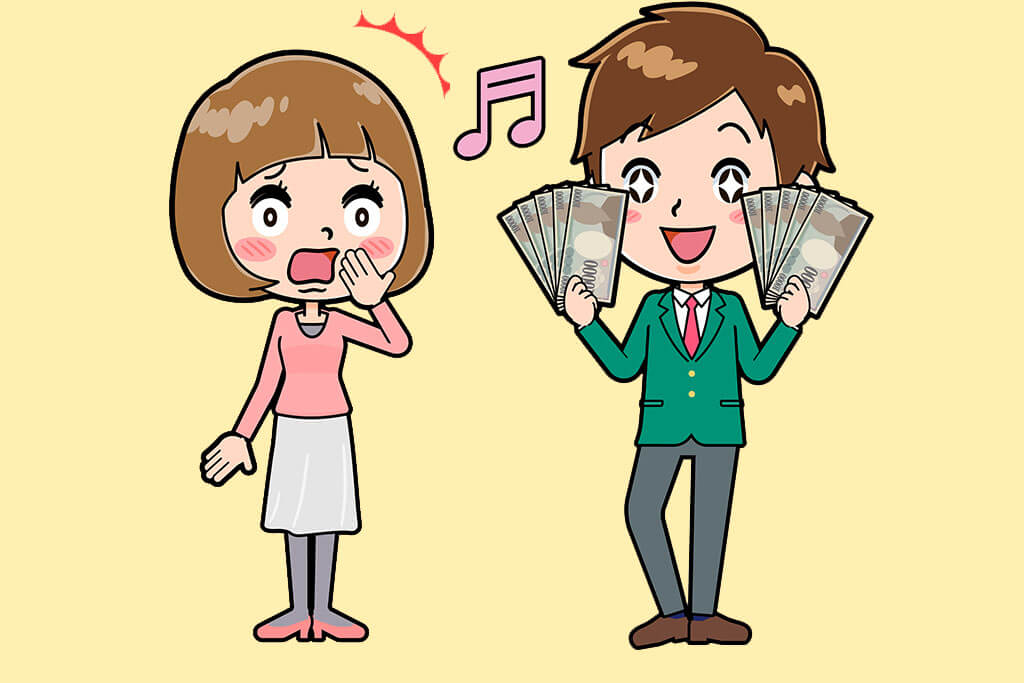How to say Good Job in Japanese
Whether you want to shower someone with praise, or simply tell them that they’ve done a good job in Japanese, there are a few expressions you should know.
Which expression you’ll need will depend on the situation, who you want to praise, and even when you want to praise them. This is primarily because the Japanese language is full of honorifics, which means your style of speech can drastically change subject to the circumstances.
Like many other words and expressions, there is no perfect direct one-to-one translation with all the same nuances.
With that said, the best way to say “good job” in casual and formal Japanese is お疲れ様 (otsukaresama) and お疲れ様です (otsukarasama desu) respectively. You may also see よくやった (yoku yatta) or よくできた (yoku dekita) floating around. While these two expressions do translate to “good job” in Japanese, their nuances are different.
Put simply, よくやった (yoku yatta) and よくできた (yoku dekita) are best used when you’re a superior who is praising a subordinate. These kinds of relationships include those such as teacher to student, or manager to employee.
This ultimate guide explores the most common ways to say “good job” in Japanese before jumping into similar expressions. Each entry is coupled with explanations and examples suitable for beginner or intermediate learners. Let’s begin!
Good Job in Formal Japanese
- Good job.
お疲れ様です。
otsukare sama desu.
In Japanese culture, it’s very common to say “good job” or “good work today” to each other and colleagues at the end of a work shift. After your work is done for the day, it’s common courtesy to say お疲れ様です (otsukare sama desu) to your co-workers as you are about to head home.
Your colleagues will then return the expression back to you and thank you for your work today with another お疲れ様です (otsukare sama desu).
- 今日はお疲れ様です。
kyou ha otsukare sama desu.
Good job today, much appreciated.
The expression お疲れ様です (otsukare sama desu) is not really used to praise someone. Instead, it is used to express gratitude for someone’s hard work.
There are, however, phrases such as よくやった (yoku yatta) or よくできた (yoku dekita) which much better directly express your praise towards someone. They come with their limitations though, and will be discussed in-depth later!
Let’s have a glance at the etymology of お疲れ様です (otsukare sama desu).
お (o) – This is an honorific prefix. It is used to essentially beautify the word.
疲れ (tsukare) – This is the stem of the verb 疲れる (tsukareru) which means “fatigue”, or “tiredness”.
様 (sama) – An honorific suffix used in other words such as 王様 (ousama), meaning “king”. It can also be used to say “the state of something” in Japanese.
です (desu) – A polite way to say “be” or “is” in Japanese. In the past tense, this can become でした (deshita), meaning “it was”.
The uses of お疲れ様です (otsukare sama desu) are not just limited to that of the workplace though. It can be used between people who have completed an activity together to thank each other for their hard work for instance.
Good Job in Japanese
- Good job.
お疲れ様。
otsukare sama.
As we just mentioned above, お疲れ様です (otsukare sama desu) can also be used to express appreciation for someone’s effort in an activity outside of the traditional workplace.
For example, two students who have worked together on a school project might say “good job” to each other after finishing up. I’ve even seen the chat in a Japanese live stream fill up with お疲れ様です (otsukare sama desu) from viewers when the stream is ending!
However, when you’re speaking with someone who is on the same social level as you, for instance, a friend or family member, you can simply use お疲れ様 (otsukare sama) without the addition of です (desu). The です (desu) is only really required when it’s necessary to be polite, such as when you’re speaking to a manager or stranger.
Furthermore, you don’t necessarily have to have worked together with said person on an activity. If you know and are aware that the person has exerted their effort towards something, and this is your first time seeing them, it’s common to say お疲れ様 (otsukare sama).
In this situation, you’re expressing “good job” with the implication that you appreciate that the person must be tired.
Perhaps your partner has just come home after finishing work, or an activity. You could say:
- お帰り!お疲れ様。
okaeri! otsukare sama.
Welcome home! Good job/Good effort.
To make this expression even more casual you can drop the 様 (sama) to make it お疲れ (otsukare). If you do, the meaning is slightly altered. お疲れ (otsukare) is a much lighter expression, thus you’re conveying a much more casual “Thanks for helping” rather than a “Thank you for today” kind of thing.
Good Job in Casual Japanese
- Good job/Cheers.
おつ。
otsu.
It’s actually possible to casualise お疲れ様です (otsukare sama desu) a fourth time. The ultimate casual way to say “good job” in Japanese is to simply say おつ (otsu).
As you may expect, おつ (otsu) is essentially slang for “good job” in Japanese, therefore is lacking in emotion compared to the full expression.
You can use it during scenarios where you don’t need to express your full-blown appreciation for someone’s effort. Imagine you’re playing an online video game with friends, it’s getting late and someone decides to go to bed. The conversation may look like this:
- 眠いからそろそろ寝る。
nemui kara sorosoro neru.
I’m tired so I’m going to sleep now.
As a response to this:
- おつ。おやすみ!
otsu. oyasumi!
GGs. Good night!
During this situation, you don’t need to graciously thank them for their hard work today. It’s sufficient enough to just say おつ (otsu). In the example above, you could even drop the おやすみ(oyasumi), as there is enough implication in the おつ (otsu) to convey a “good night” already.
Related: How to say Good Night in Japanese [Ultimate Guide].
There is a kanji for おつ (otsu), but you’ll probably see it written in hiragana, or even sometimes katakana more frequently.
More Ways to Say Good Job in Japanese
- Good job.
よくできた。
yoku dekita.
As we’ve mentioned, よくできた (yoku dekita) is probably the most direct way of saying “good job” in Japanese. It is important to note that although it’ll be the closest translation, it should be avoided when speaking to anyone with who you are on equal social terms, or when you are the subordinate.
This is because that よくできた (yoku dekita) is used when a senior or supervisor is speaking to a subordinate. This could be a teacher to student, manager to employee, or even parent to child.
When I first met my partner, who is a native Japanese speaker, there were plenty of situations where I wanted to encourage them by praising them for their effort. So many times I told them よくできたね (yoku dekita ne) while being completely oblivious to the fact that this is actually extremely condescending.
Unless you want to come across as very patronising and arrogant, you’re probably best off not doing what I did and telling my partner よくできた (yoku dekita).
Of course, I purely intended to praise them and express how amazing I thought they were. There are expressions you can do this, see any entry below this one (and よくやった (yoku yatta) to do so.
Understanding よくできた (yoku dekita)
So, why did I make the mistake of thinking よくできた (yoku dekita) can be used to say “good job” to anyone in Japanese… It is a direct translation after all.
The first part, よく (yoku) is the adverb for よい (yoi), sometimes said as いい (ii), meaning “good” in Japanese.
Secondly, できた (dekita) is the past tense of the verb できる (dekiru), meaning “can do” in Japanese.
So yes, よくできた (yoku dekita) literally means “you did a good job” in Japanese.
This is all information you can get from a dictionary… But what a dictionary won’t tell you though, is how よくできた (yoku dekita) is used and perceived in Japanese culture.
When I asked my partner about what it is that makes this expression feel condescending when used between people who are on two equal social levels, they told me it was because it gave them flashbacks to when they were praised by their parents as a child. So when you’re being told よくできた (yoku dekita) by a friend, for instance, it would feel like they’re looking down on you. Not so nice right? I learned my lesson.
If you are a teacher, and you want to praise your student and tell them “good job”! You can use よくできた (yoku dekita). Likewise, you may also find parents saying the same thing to their child or a boss to their subordinate.
- 満点だ! よくできた!
manten da yoku dekita!
A perfect score! Good job!
During the above example, you can imagine a child receiving praise from their teacher or parent after nailing a 100/100 on a mathematics test.
Recommended: How to say Good in Japanese [Ultimate Guide].
Well Done in Japanese
- Well done.
よくやった。
yoku yatta.
よくやった (yoku yatta) and よくできた (yoku dekita) can be used pretty much interchangeably. It is important to remember, that both of these expressions should only be used to praise someone who is your subordinate in a social setting.
To reiterate, the kind of relationships where it is okay to use these expressions include teacher to student, manager to employee, parent to child etc.
You can use よくやった (yoku yatta) to express praise, or gratitude to someone for their contribution to something. It can be used to convey anything along the lines of “good job” or “good work” in Japanese.
Perhaps your manager is evaluating your work. If they are pleased with your efforts, they may say:
- とても素晴らしい!よくやった!
totemo subarashii! yoku yatta!
This is really wonderful. Well done!
The first part よく (yoku), which we’ve covered above, is the adverb for よい, meaning “good”. This means that よく (yoku) would translate to “well”.
The second part is やった (yatta), the past tense of the verb やる (yaru). This verb やる (yaru) has many meanings, but in this case, it means “to do” in Japanese. With this knowledge, we can understand that やった (yatta) means “done” or “did in Japanese.
We can understand that the literal meaning of よくやった (yoku yatta) is “well done.”
Excellent/Great Job in Japanese
- Great!
えらい!
erai!
えらい (erai) is also another expression with many meanings, one of which is “excellent”. To really praise someone on a job well done, telling them that what they’ve done is “great” is a superb way to do it.
You can use えらい (erai) on its own to commend someone. Usually, this would again be for people who are your subordinate or who are younger than you. For instance, teachers would typically use えらい (erai) to praise students or commend them.
- えらい! えらい!
erai! erai!
You’re so clever!
You can actually use えらい (erai) to commend someone who is your equal. In these cases, it’s safer to use it sarcastically, or as a fun way to praise someone on something trivial. Say you have a friend who hasn’t been outside for a while, so they’ve been lazing around in pyjamas.
- 聞いて聞いて!今日はちゃんと服を着たよ。
kiite kiite! kyou ha channto fuku wo kita yo.
Listen, listen! I wore proper clothes today.
You could reply:
- えらいね。
erai ne.
Wow, good for you.
Using it with people whose status is higher than yours though may come across as quite obnoxious.
You can use えらい (erai) with nouns to describe something that is remarkable. An えらい人 (erai hito) for instance could be understood as a person who is remarkable. Their remarkableness is subjective, therefore an えらい人 (erai hito) can refer to someone of fame, your manager, or an important individual.
That’s Amazing! in Japanese
- That’s amazing!
すごい!
sugoi!
すごい (sugoi) is without a doubt an expression you’ll hear everywhere. You can use it when you want to say “amazing” or “awesome” in Japanese. Of course, you can imagine that telling someone that what they’ve done is amazing will light up their face.
Perhaps the easiest expression to use, you can use すごい (sugoi) any time when you want to praise and encourage someone. Perhaps a friend shows you their painting that they’ve invested a lot of time and effort into.
- これはすごいよ。
kore ha sugoi yo.
This is amazing.
Simply saying すごい (sugoi) by itself will also convey the meaning of “amazing” just fine too.
In Japanese, instead of telling someone directly that they’ve done a good job, between friends at least, it’s much more common to shower them with compliments. By expressing your thoughts like this, your friend will perhaps feel even more encouragement compared to if you simply told them well done.
The Ultimate “Good Job” in Japanese
- Excellence, just as expected from you!
さすが!
sasuga!
さすが (sasuga) is a heavily nuanced expression that is uniquely Japanese. It also falls into the category of untranslatable Japanese words with no direct English equivalent.
What’s more, is that the expression さすが (sasuga) is probably the absolute best and most powerful way to praise someone in Japanese. When you say さすが (sasuga) to someone, you’re conveying much, much more than a regular “good job”.
You can use さすが (sasuga) as a powerful complement for when someone (or something) lives up to their (or its) reputation. To put it another way, さすが (sasuga) nuances that someone has truly matched or exceeded our expectations.
For instance, Mt Fuji, Japan’s iconic mountain is famous for its beauty. When you do go to Japan to see the mountain, because you’ve heard the rumours, you’re already expecting it to be beautiful. Then, when you see it for the first time, you may say something like:
- 日本の富士山はさすがにきれい!
nihon no fujisan ha sasugani kirei!
Japan’s Mt Fuji is impressively beautiful (true to its reputation)!
In terms of complimenting others, you can use さすが (sasuga) when you really want to flatter them.
- さすがだね。
sasuga da ne.
You’re incredible (as always, just as I expected).
With さすが (sasuga), you’re telling the person that you are beyond impressed, to the level that it’s only natural that they would impress you (because of who they are as a person).
Nice Work in Japanese
- Nice work.
ナイス。
naisu.
As you may have guessed, ナイス (naisu) is borrowed directly from the English language. ナイス (naisu) represents the English word “nice”. There are occasions where the Japanese word ナイス (naisu) and the English word “nice” are interchangeable, and also a few where they are not.
In Japanese, ナイス (naisu) is often used as a response to when something has gone well for someone or when they have done a good job at something. Just like how we can say “nice” on its own in English to mean “good job”, we can do the same with ナイス (naisu).
For example, I said to my friend the other day:
- 最近「夢を見る島」というゼルダゲームをクリアしたよ。
saikin “yume wo miru shima” toiu ge-mu wo kuria shita yo.
I completed the Link’s Awakening Zelda game recently.
To which, they replied:
- ナイス! 楽しかった?
naisu! tanoshikatta?
Nice! Was it fun?
You can use ナイス (naisu) for all similar situations to the example above. Hey, you finished your homework? ナイス (naisu)! Passed your driving test? ナイス (naisu)! Off work today? ナイス (naisu)! This can become a pretty exhaustive list.
Other Ways to Say Nice in Japanese
When you want to say nice as an adjective though, such as if you were describing a nice or kind person… You can use ナイス (naisu), but it sounds a little strange. Instead, you’ll want to use other words that mean “nice” or “friendly” in Japanese. These are 親切 (shinsetsu) and 優しい (yasashii).
- 彼は親切な人だ。
kare ha shinsetsu na hito da.
He is a nice (kind) person.
Or perhaps…
- 彼女は優しい。
kanojo ha yasashii.
She is kind (friendly).
To summarise, ナイス (naisu) is used more so as an interjection when you want to convey a “good job”, rather than as an adjective. For other expressions, such as if you wanted to say “I hope you had a nice time” have a glance at these two articles:
Related: How to say Hope in Japanese [Ultimate Guide]
Related: How to say Have a Good Day in Japanese [Ultimate Guide]
You Did Well in Japanese
- You Did Well.
頑張ったね。
gannbatta ne.
We can use 頑張ったね (gannbatta ne) when someone has obviously put a lot of effort into something. Regardless of whether or not that “something” was a success or not, hearing words of praise such as “you did well” can really make them feel good about themselves.
頑張った (gannbatta) is the past tense of the word 頑張る (gannbaru), which means to persevere or to keep at something. Therefore, we can understand 頑張ったね (gannbatta ne) anything along the lines of “you did well” or “you did your best” in Japanese.
There are other ways to send words of encouragement to someone using variations of 頑張る (gannbaru) too, such as saying “good luck” in Japanese.
The addition of ね (ne) here, translates to “isn’t it?” or “right?” in English. This means that when you say 頑張ったね (gannbatta ne), you’re essentially saying “You did your best, didn’t you?”. It’s worth noting that the ね (ne) is completely optional, and it’s perfectly fine to say 頑張った (gannnbatta).
However, when you say 頑張った (gannbatta) without the ね (ne), it sounds like you’re making a statement that someone tried hard at something, rather than telling them directly they did a good job with implications of empathy.
For instance, say you were talking with a friend about someone:
- 彼はめっちゃ頑張った。
kare ha meccha gannbatta.
He tried really hard.
Whereas, if you were to attach the ね (ne), and direct the expression to the person in question:
- めちゃ頑張ったね。
meccha gannbatta ne.
You tried really hard, didn’t you?
When the context is understood between the speaker and listener, we can omit pronouns in our speech. Moreover, the listener will feel much more emotion in your words when you say 頑張ったね (gannbatta ne).
Keep It Up in Japanese
- Keep it up.
頑張れ。
gannbare.
Sometimes we want to encourage someone to keep doing a good job at whatever it is they’re doing. There are many ways to cheer someone on in Japanese, which I discuss in detail. To cheer on a friend, family member, or someone close to you during the midst of all the action, you can use 頑張れ (gannbare).
You can use 頑張れ (gannbare) to cheer on a friend at the moment that they are trying hard at something. For example, they may be in the middle of running a marathon, at which point they run past you. You could shout out to them 頑張れ! (gannbare!) to encourage them to keep it up.
Perfect! in Japanese
- Perfect.
完璧。
kannpeki.
What better way to tell someone that they’ve done a good job than to tell them what they’ve done is perfect! You can’t go wrong with 完璧 (kannpeki), you can use it at any time you want to say to someone that something is perfect or flawless in Japanese.
You can use 完璧 (kannpeki) on its own, or as part of a longer phrase. Say you’ve asked a friend to design or make you something. Upon completion, they show you the finished product. Simply responding with 完璧 (kannpeki) here will no doubt make your friend feel accomplished in what they’ve done.
- これは完璧じゃん! 本当にありがとう!
kore ha kannpeki jan! hontouni arigatou!
This is perfect! Thanks so much!
You’re also telling your friend that you are more than happy/satisfied with the result. 完璧 (kannpeki) is a great way to tell someone they’ve done a good job in Japanese, without sounding patronising.
Not a Good Job in Japanese
On the other hand, if you wanted to tell someone that they have not done a good job for whatever reason, we can do that with 完璧 (kannpeki) too.
It goes without saying that telling someone they haven’t done well directly can come across as quite blunt, so use this next one with caution!
- これは完璧からほど遠い。
kore ha kanpeki kara hodo tooi.
This is far from perfect.
There are also ways to tell someone that they need to do a better job a little more kindly in Japanese. Just like how we need to be indirect when saying “no” to someone in Japanese, a lighter expression here would probably go down better.
- もうちょっとだけ!
mou chotto dake!
Just a little more!
The above phrase is twofold. We are both encouraging the person to carry on, while also indirectly telling them that the job is not finished to our standard.
Spectacular! Well Done! in Japanese
- Spectacular.
お見事。
omigoto.
Imagine you’ve gone to the theatre to watch a performance and the middle-high class crowd is mesmerised by the performance. They are utterly astonished… It was marvelous, outstanding, spectacular! That’s the kind of image I have when I hear お見事 (omigoto).
お見事 (omigoto) is essentially applause, a way of showing your deep appreciation for someones’ high-quality work.
This means that when you say お見事 (omigoto) to someone, you are telling them that they’ve done a superb job, to the point where you’re taken away by their work.
- お見事! 素晴らしい演技だった!
omigoto! subarashii engi datta!
Spectacular! What wonderful acting!
Receiving this kind of praise from someone such as your manager would of course feel amazing. When someone says this to you, you know you’ve done a fantastic job.
The お (o) in お見事 (omigoto) is an honorific prefix. Despite this, お見事 can be used in casual situations. The purpose of the お (o) here is to beautify the word, to make it more appropriate to describe the masterpiece you’ve produced!
I Got a Good Job! in Japanese
- I got a good job!
私はいい仕事の申し入れを受けた!
watashi wa ii shigoto no mou shi ire wo uketa!
Just in case you’re proud of an actual job you’ve acquired, a good one that you’ve been hired for, this is the phrase you can use!
Bonus! Good Work in Formal Japanese
- Good Work (Formal).
ご苦労様です。
go kurou sama desu.
Just like お疲れ様です (otsukare sama desu), you can also use ご苦労様です (go kurou sama desu) to say “good work” to someone after a day at work.
The main difference though is that ご苦労様です (go kurou sama desu) is strictly an expression used in the workplace.
It isn’t explicitly used to praise someone, instead, when you say ご苦労様です (go kurou sama desu) to someone, you’re thanking them for their troubles.
Let’s look at the components of ご苦労様です(go kurou sama desu).
Firstly, ご is very similar to the お (o) we’ve been seeing a lot, in that it’s an honorific prefix.
Secondly, 苦労 as a complete word means “labour”. 苦 actually means “suffering” or “hardship,” and 労 means “labour”.
様 is the same as we’ve seen in お疲れ様です. It is an honorific suffix. Lastly, です (desu) means “is” in polite Japanese.
Quite literally, ご苦労様です (go kurou sama desu) is simply stating that something was suffering or heavy labour.
When we use ご苦労様です (go kurou sama desu) in the workplace though, we’re expressing our gratitude for someone’s effort. You’ll most likely hear managers who supervisors say this to their subordinates.
Good Job on the Lecture
- Good Job on the lecture.
いい勉強になりました。
ii benkyou ni narimashita.
This phrase above is perhaps the only way you can express a good job to anyone who is of higher status than you in Japanese. You could say it to your teachers after they’ve delivered you a lecture, or taught you something useful.
When you say いい勉強になりました (ii benkyou ni narimashita) you’re explicitly saying that you’ve learned something of value, thanks to whoever (or whatever) taught you.
On that note, that brings me to the end of this ultimate guide.
お疲れ様です!
I hope that you found the information you were looking for. If you have any questions at all, leave a comment below and I’ll be happy to help the best I can.
Guides related to this article:
How to say Good in Japanese [Ultimate Guide].
While you’re here, fancy looking at more ultimate guides?
How to say I Don’t Know in Japanese [Ultimate Guide].
How to say Let’s Go in Japanese [Ultimate Guide].
Do you like The Legend of Zelda + Japanese? Come and quest with me!
Good luck with your Japanese learning!
How to say Good Job in Japanese Read More »





































































